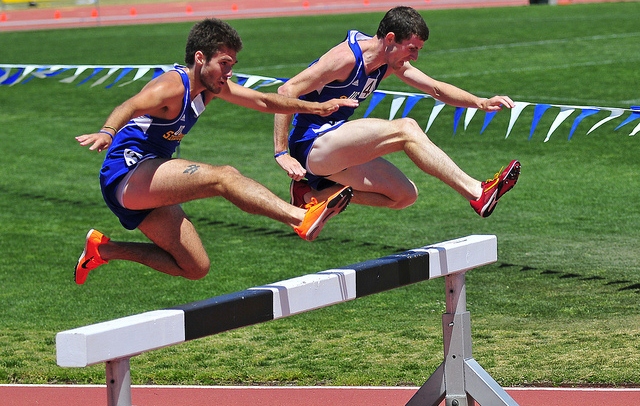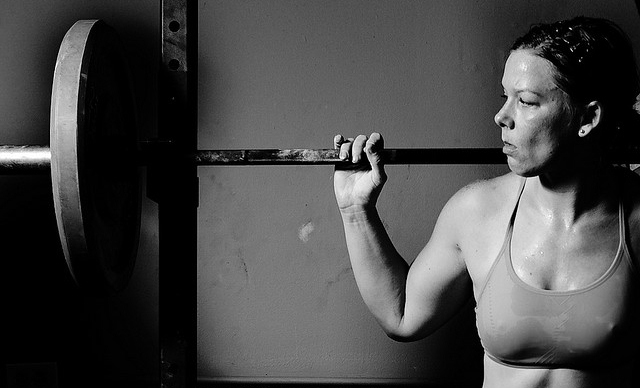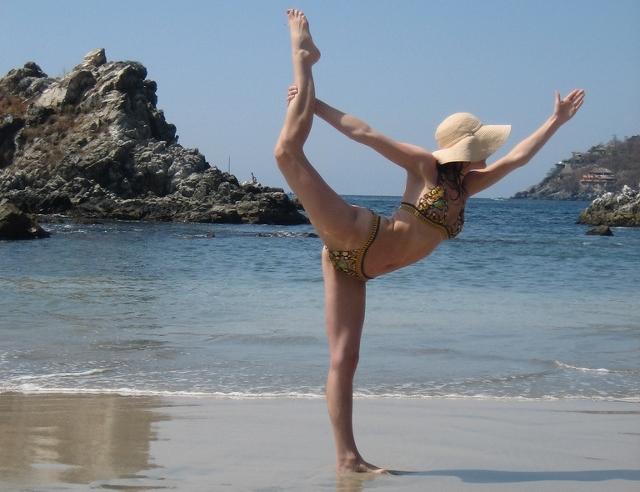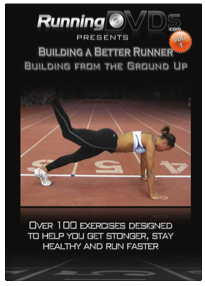Training for any race – even a marathon – includes a lot more than just running. Runners who only run are doomed to overuse injuries.

Loyal Strength Running readers will recognize this as a common theme of my writing and training programs. It’s nothing new and I’ve written very specific articles in the past:
- How Well Do You Move? Assessing Functional Movement
- Developing Running Coordination and Athleticism (or, Preventing One-Dimensional Fitness)
Athleticism is built not just by various exercises but by a comprehensive macro- and micro-cycle (long-term and short-term training) that includes significant variety. Trail running, shoe rotations, multiple paces, many race distances, and frequent fast running are all ways to prevent your body from getting into the rut of only knowing one pace.
Perhaps the best way to reveal training best practices is to study elite runners. But who does that? Is their training even available?
Not usually. But recently I read a great article on Dathan Ritzenhein on his Chicago Marathon preparation. Aside from a lot of running, his weekly training includes:
- 10 miles on an underwater treadmill
- 15 miles on an Alter-G treadmill
- 3 gym workouts
- 60 minutes of daily stretching (likely a combination of dynamic, AIS, and static)
- 1 physical therapy evaluation
- 2 massages
Whoa! Running is clearly a full-time job for the elites. But look at how much work is preventative: the 9+ hours Ritz spends every week on strength work and flexibility in addition to about 120 miles of running on land, underwater, and an anti-gravity treadmill.
When I interviewed Dathan earlier this year, he made it clear that he does a lot of core and strength exercises to help him stay healthy and athletic. He told me:
“We usually work out three times a week in the gym. I will also do various strength work on a daily basis, exercises which address specific weaknesses. We do a lot of single leg lifting and balance which are adapted from traditional lifts. Things such as dead lifts and power cleans. Usually I would say we concentrate on about 1/3 core, 1/3 balance, and 1/3 power. All the exercises end up being heavily core based even if they are single leg power cleans or squats.”
I’m obviously not recommending you devote all that time to dynamic stretching, weights, and body-weight exercises. Running isn’t a profession for normal people like you and me so we have to make more efficient use of our time.
One of the ways we can do that is by including a 10 minute warm-up and cool-down routine before and after our runs. I’ve shown you a few routines here, but you can do even more with a comprehensive DVD series.
The Building a Better Runner DVDs (which show you about 200 exercises!), is the best option available on the market today. I own both volumes 1 and 2 and use them regularly to prevent injuries.
But instead of looking at what routines to do (that’s what Building a Better Runner does), let’s look at what how these routines actually build each component of fitness.
Biomotor Abilities: The 5 Components of Fitness
If you were to ask most runners what “fitness” means, they’ll likely say it’s about how fast you can run. They’re focusing on endurance.
But fitness is comprised of much more than simply endurance (though that’s most important for runners!) and if we want to reach our potential or prevent injuries, we have to work on all the building blocks of fitness.
These building blocks are also known as biomotor abilities, which USA Track & Field (USATF) defines as the “abilities in the biological and motor domains that enable success in athletic performance.” In other words, they’re the specific components of fitness that, when put together, help you succeed in any sport.
There are five biomotor abilities that enable you to kick ass as an athlete:
- Strength: the ability to produce force (lifting heavy weights)
- Speed: the ability to move very rapidly (sprinting)
- Endurance: the ability to resist fatigue (running a marathon)
- Flexibility: The ability to attain large ranges of motion at the joints (doing a split)
- Coordination: the ability to move the body in order to accomplish a task (completing a technical lift)
You’ll see that some of the examples require a combination of skills. Clearly, an advanced body weight workout that includes pistol squats will require a combination of coordination and strength. Some skills are also combinations: power is the combination of strength and speed while agility is a combination of speed and coordination.
I can’t help but think, With our powers combined!
Enough about 1980’s cartoons. So every fitness building block is closely related to another; you can’t develop one without a secondary ability being worked as well. They’re all connected and important, which reminds me of Coach Brad Hudson discussing training, saying that,
“I believe in everything and nothing. Because you realize it all criss-crosses over into everything—you have to have everything.”
You have to have everything! That’s crucial and a lesson I started to apply to my own training nearly four years ago. Since then, I haven’t had any major injuries. Compare that with the previous ten years of injury-riddled training and it’s a night and day comparison.
I’ve had similar success with runners who choose a customized training plan. The vast majority stay healthy and run faster than they planned. This stuff works!
The Concept of Training Soup
Quick, what makes chicken soup so damn good? Not sure? Well, that’s the point – it’s a trick question! There’s no single ingredient that makes a soup. Instead, it’s the combination of ingredients and cooking method that makes chicken soup delicious.
Training for a race is the same way: there are no magic workouts or “secrets” to running faster.
Here’s the real “secret:” Solid workouts in a logical progression with consistency and recovery will make you fast. Like that? Click here to tweet it!
Training soup could also be called “multilateral training” – a nerdy concept I learned while taking my USATF Level 1 Coaching Certification class. It focuses on the development of all five components of fitness in planned balance. Of course, specialization is necessary for sprinters and marathoners, but long-term progress demands balance.
USATF says:
“The biomotor abilities are requisite to each other and are interdependent upon each other. While specialization is necessary and appropriate at times, the value of balance among an athlete’s biomotor qualities and balanced development of these abilities in the program should not be underestimated.”
When you specialize, you increase the focus of your training to be event-specific. Runners focused on 5k training will have different workouts than marathoners. While the demands of each race are very different, the training should still include elements of every fitness component – just in different ratios.
Strength: Which Area Should You Focus On?

Strength is a complex subject and “being strong” means a lot more than simply the ability to produce force (like lifting a heavy dumbbell). There are actually five different components of strength which are all more specialized abilities.
- Absolute strength (producing great force)
- General strength (overcoming your body-weight)
- Power (producing force rapidly)
- Elastic Strength (producing force using the elastic reflex, like with jumping exercises)
- Strength Endurance (sustaining force production)
It’s possible to train all facets of strength even in a distance running program, though of course they’re not all a primary focus.
So, which ones should you focus on? It depends on your goal race distance and ability level, but for most runners they should put most of their time into developing absolute and general strength. In other words, spend time lifting in the gym and doing core or body-weight strength exercises.
Here’s why they’re more important than the other three: power is a combination of speed and absolute strength. Like elastic strength, it’s risky from an injury perspective. Too risky for the majority of runners who can’t work out alongside a coach for supervision.
Strength endurance is partially built by using general strength exercises, though not completely. You’ll need high repetitions or extended stabilization (like a plank) to develop your strength endurance. If you do the a general core routine, you’ll gain strength endurance.
But for runners training for the longer events, it’s best to lift heavy, recruit as many muscle fibers as possible, and get strong that way.
What is “Speed?”
Everyone’s favorite subject! You’ll always hear runners saying, “he’s so speedy!” or “How fast can you run?” Rarely are they actually talking about speed in the purest sense of the word. Instead, speed is mostly in the sprinter’s domain and is made up of three sub-categories:
- Acceleration (moving from a stopped position)
- Absolute speed (the highest velocity you can attain, i.e., your 100% max effort)
- Speed endurance (the ability to maintain absolute speed)
Recently I’ve started moving away from using the term “speed workouts” with my runners because none of the workouts we use actually develop speed! Unless we’re running hill sprints, runners in my coaching program almost never run at 100% max effort.
It becomes more important when athletes become more competitive but sessions that build speed have a higher injury potential so I stay away from them most of the time. They often require supervision and come with a heavy price tag of significant neuromuscular fatigue.
Strides reaching about 95% of max effort work well when coupled with hill sprints for the majority of runners, so if you’re not sure where to start, first run strides and then progress to hill sprints.
The 3 Keys to Endurance
Ah, my personal favorite topic! As marathoners or half marathoners, endurance is our top priority if we want to be successful. It can be broken down into three sub-qualities:
- Aerobic fitness (exercising using oxygen. Note that there’s an aerobic component to almost all training)
- Anaerobic fitness (exercising without oxygen, i.e., in oxygen debt)
- Work load (the ability to withstand a large training load)
We can get more specific and talk about the alactic and glycolytic sub-components of the anaerobic system and other details, but let’s focus on the big picture. I may start falling asleep if I get too deep into the science anyway.
The building blocks of endurance are all interconnected, especially since aerobic fitness plays heavily into all three sub-categories. Also keep in mind that work load directly impacts aerobic fitness. In other words, the more you’re able to run – both easy and fast – the more fitness you’ll gain.
Tip: beginners should focus on work load, aerobic fitness, and finally anaerobic fitness. Runners who emphasize a relatively high workload and aerobic development, with limited anaerobic work depending on their goal and training, will run big PR’s.
Flexibility: It Ain’t About Touching Your Toes

Gone are the days when doing the sit and reach test gave you an accurate prediction of your flexibility. Instead, functional flexibility is what’s really important. Functional flexibility is how well you move through the ranges of motion required in your sport. In running, having ample hip flexibility is important for a dynamic, powerful stride.
There are really two types of flexibility:
Static Flexibility is your ability to attain a large range of motion at a joint without any movement. The toe-touch, wall stretch for your calf muscles, and the leg cross over for the glutes are all classic examples of static flexibility stretches.
Dynamic Flexibility is your ability to attain a large range of motion at a joint with accompanying movement. These exercises typically require simple movements like leg swings, groiners, or the drinking bird.
Distance runners should focus on dynamic flexibility exercises that help develop functional flexibility. Touching your toes is not a predictor of specific flexibility for running, but a leg swing might show you how your leg moves with movement. A short 5-10 minute dynamic warm-up is all you need. Static stretching can sometimes help but it should be reserved for after your workout (never do a static stretch on a cold muscle!).
Coordination (Runners #Fail at this!)
Have you ever seen a goofy runner trying to put on a pair of shoes while standing up? Or, my personal favorite, trying to play basketball? Yeah, it’s downright hilarious.
There are many types of coordination (though not all of them are appropriate for distance runners).
Agility is the ability to perform irregular movements quickly and accurately. Examples include quick starting, stopping, and changes in position or direction. Agility is not specific to the demands of distance running – and can dramatically increase injury risk if done inappropriately.
Mobility is very similar to dynamic flexibility, except that large ranges of motion are used to accomplish a particular task. Practicing your flexibility over an adjustable hurdle is a great way to improve your mobility, especially if you are a hurdler or steeplechaser.
Balance is simply the ability to remain stable during movement. Can you stand on one leg without wobbling? What about when your eyes are closed?
I don’t recommend agility training for runners because it won’t help you race faster in the distance events. It’s useful for football or soccer players and some sprinters, but there’s no need to risk an injury for no benefits.
However, balance is something that every runner should work on. If you can’t put your shoes on while standing up without falling over, then you know it’s something you need to improve!
How Do You Master Athleticism?
This article might seem daunting – it’s damn long and some people might have run away (ha!) from the sheer amount of information here. My smart readers will tweak their training to include every component of fitness and become a more well-rounded runner.
But how do you even know if your training is “athletic?” Use this simple checklist:
- Do you complete a dynamic warm-up before every run?
- Is your mileage relatively (for you) high?
- Do you do at least two core or strength sessions every week?
- Can you complete a simple set of running drills like A skip, carioca, or high knees comfortably?
- Do you run strides or hill sprints at least twice per week?
You should be able to answer YES! to at least four questions – but preferably all five. If not, get working!
I want to thank the USA Track and Field Level 1 Coaching Curriculum for this post’s inspiration and for some of the definitions.
Photo Credit, Photo Credit, Photo Credit
